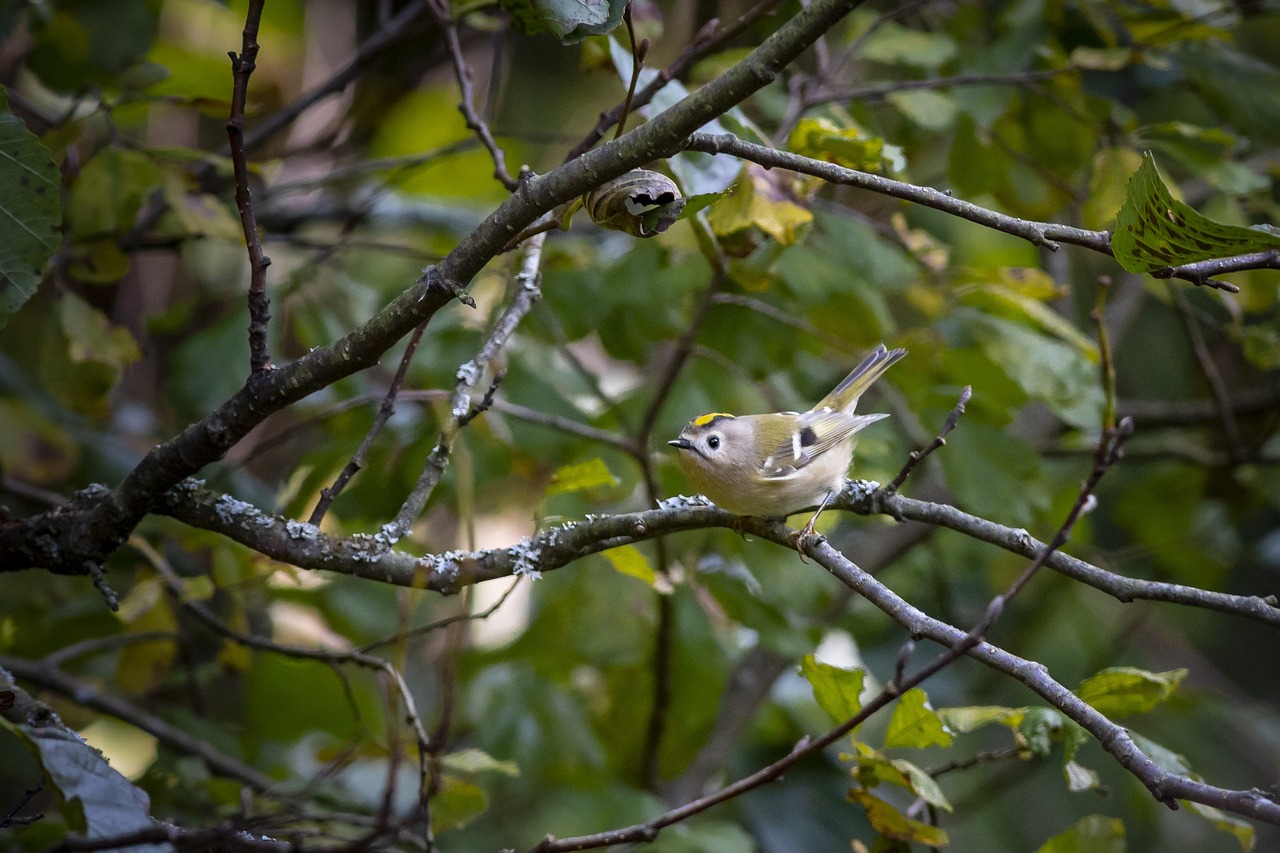The Goldcrest (Regulus regulus) is Europe’s smallest bird, known for its distinctive golden crown stripe and energetic nature. Here’s a concise overview of this delightful species:
Physical Description:
- Size: 8.5–9.5 cm in length, with a wingspan of 13.5–15.5 cm.
- Weight: 5–7 grams.
- Coloration:
- Crown: A bright yellow or orange stripe on the top of its head, bordered by black, which is more pronounced in males (orange) than in females (yellow).
- Body: Olive-green upperparts with paler underparts, a short, fine bill, and large, dark eyes.
Habitat:
- Range: Found throughout Europe and parts of Asia, as well as in northern Africa.
- Preferred Habitat: Goldcrests favor coniferous forests, particularly those dominated by spruce and fir, though they can also be found in mixed woodlands, parks, and gardens.
Behavior:
- Feeding: They primarily feed on small insects, spiders, and other invertebrates. Their tiny size allows them to glean insects from the tips of branches and needles of coniferous trees.
- Vocalizations: The Goldcrest has a high-pitched, thin call, which can be difficult for humans to detect. Their song is a rapid series of high notes.
- Movement: These birds are highly active, constantly flitting through trees in search of food.
Breeding:
- Nests: They build intricate nests high in coniferous trees, usually suspended from branches. The nest is small and cup-shaped, made from moss, spider webs, and feathers.
- Eggs: They lay 6–12 tiny eggs, with incubation lasting around 15–17 days. Both parents participate in feeding the chicks.
Migration:
- Resident and Migratory: While some Goldcrests are resident in their home range year-round, particularly in milder climates, northern populations often migrate south during the winter to avoid harsh conditions.
Conservation:
- Status: Classified as “Least Concern” by the IUCN, though populations may fluctuate due to harsh winters and habitat loss.
The Goldcrest is a remarkable example of how tiny creatures can thrive in cold and challenging environments, and its cheerful presence adds charm to woodlands across its range.
Visited 595 times, 28 visit(s) today
Views: 1266
Subscribe to the newsletter:
